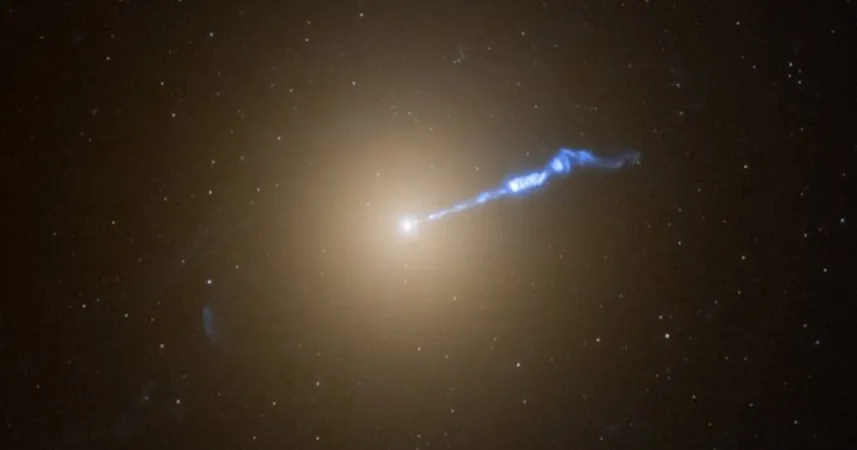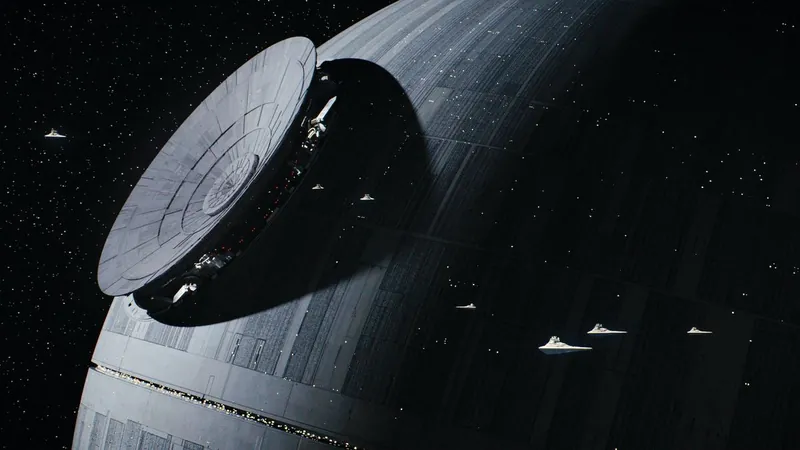
Breathtaking New Discovery: Black Holes May Trigger Stellar Explosions with Their Plasma Jets!
2024-11-26
Author: Benjamin
Groundbreaking Study
A groundbreaking study has revealed that black holes, the enigmatic giants lurking at the centers of galaxies, can instigate massive explosions in nearby stars through powerful jets of plasma. These findings not only deepen our understanding of the cosmic wonders but also add an element of mystery to the phenomena surrounding black holes.
Understanding Black Hole Jets
Astronomers have long been aware of the existence of jets that some black holes emit—streams of plasma shot out at nearly the speed of light. The famed M87 galaxy, home to a supermassive black hole, is an astonishing case with a plasma jet that extends nearly 3,000 light-years from its core. This immense distance highlights the sheer power of black holes and their influence on the universe.
Novas in the M87 Galaxy
Within the M87 galaxy, a fascinating phenomenon known as novas occurs frequently. A nova is a stellar event that transpires in binary star systems, typically between a red giant nearing its end and a smaller white dwarf. As the red giant expands and sheds material, this debris accumulates onto the white dwarf. When the white dwarf gathers enough mass, it ignites a nuclear fusion reaction, dazzling observers on Earth with its brilliance.
Increased Nova Activity
What astounds scientists is that in regions where binary star systems are situated in the path of the black hole's plasma jet, novas happen approximately twice as often compared to those further away in the galaxy. The team's observations suggest a possible correlation between the black hole's jets and the increased nova activity.
Researcher Insights
Lead researcher Alec Lessing from Stanford University expressed the team’s excitement, stating, 'We don’t know what’s going on, but it’s just a very exciting finding. This means there’s something missing from our understanding of how black hole jets interact with their surroundings.'
Theories and Speculations
Speculations abound regarding this phenomenon. One theory posits that the jets could be funneling hydrogen onto the white dwarfs, elevating their chances of explosive eruptions. Alternatively, it might be the intense pressure exerted by the jet’s light that accelerates the accumulation of hydrogen, leading to more frequent stellar explosions.
Future of Research
This discovery opens new avenues for research, and scientists are eager to delve deeper into the relationship between black holes and their cosmic neighbors. As we continue to explore these celestial mysteries, one thing remains certain: the universe is full of surprises, and black holes sometimes play a role in shaping the fate of stars in ways we are only beginning to understand.
Engaging with the Cosmos
For those intrigued by the awe-inspiring and terrifying nature of black holes and their jets, NASA has released a brief video showcasing these findings. Watching it may just inspire a mix of wonder and caution as we navigate the cosmos and the potential dangers that lurk among the stars. Let’s hope that one of these powerful jets doesn’t intersect our own solar system!









 Brasil (PT)
Brasil (PT)
 Canada (EN)
Canada (EN)
 Chile (ES)
Chile (ES)
 España (ES)
España (ES)
 France (FR)
France (FR)
 Hong Kong (EN)
Hong Kong (EN)
 Italia (IT)
Italia (IT)
 日本 (JA)
日本 (JA)
 Magyarország (HU)
Magyarország (HU)
 Norge (NO)
Norge (NO)
 Polska (PL)
Polska (PL)
 Schweiz (DE)
Schweiz (DE)
 Singapore (EN)
Singapore (EN)
 Sverige (SV)
Sverige (SV)
 Suomi (FI)
Suomi (FI)
 Türkiye (TR)
Türkiye (TR)